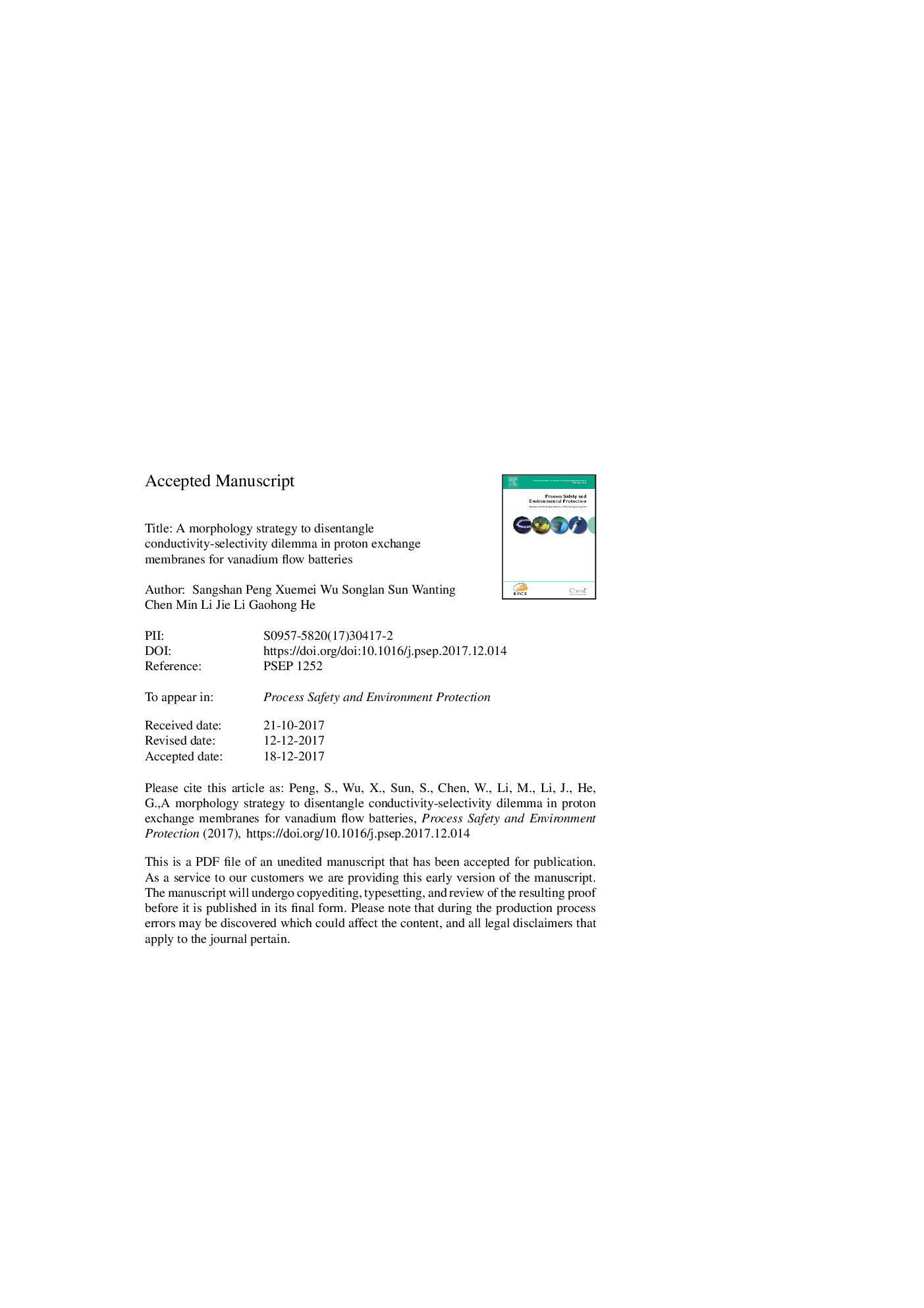| Article ID | Journal | Published Year | Pages | File Type |
|---|---|---|---|---|
| 6974213 | Process Safety and Environmental Protection | 2018 | 31 Pages |
Abstract
A novel integrally thin skinned asymmetric proton exchange membrane (ITSA-PEM) is proposed to disentangle the typical conductivity-selectivity dilemma in PEMs for vanadium flow batteries (VFBs). The membrane is successfully fabricated by a porogen-leaching-out method. It consists of a porous sublayer and an ultrathin skin layer, which is defect-free verified by the high H2/N2 separation factor of 64.9. The degree of sulfonation (DS) of PEM is reduced to extremely low (DS = 36.3%) to suppress swelling, and numerous interconnected pores are introduced to facilitate proton transfer. Low swelling ratio and defect-free skin layer lead to undetectable vanadium permeation. Meanwhile, the area resistance of ITSA-PEM is dramatically lowered to 2.1 Ω cm2 from 5.4 Ω cm2 of the dense PEM. Therefore a membrane with both improved proton conductivity and ion selectivity is obtained. Low DS also equips the membrane with sufficient mechanical strength and enhanced thermal stability. The VFB assembled with ITSA-PEM displays high energy efficiencies (EE: 75.6-90.2%) over a current density of 20-80 mA cmâ2, much superior to those of Nafion 211 (EE: 55.9-73.4%). It also shows favorable stability and slow capacity decay rate during cycling test over 50 cycles.
Related Topics
Physical Sciences and Engineering
Chemical Engineering
Chemical Health and Safety
Authors
Sangshan Peng, Xuemei Wu, Songlan Sun, Wanting Chen, Min Li, Jie Li, Gaohong He,
